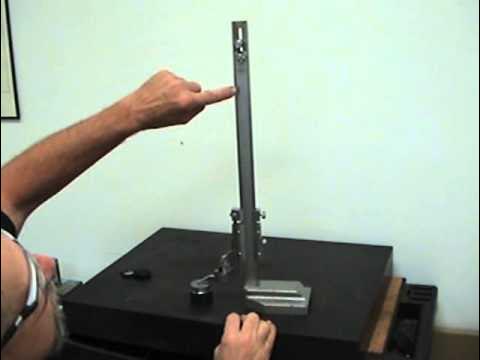How to Use a Micropipette
Summary
TLDRThis video provides a comprehensive guide on how to use micropipettes for precise fluid measurement. It explains different types of micropipettes, such as the P1000 and P20, detailing their volume ranges and how to set the correct volume using the pipette's mechanism. The video demonstrates the process of attaching a disposable pipette tip, drawing up fluid, and expelling it with the pipette plunger. Key points include the proper technique for aspirating and dispensing fluid, as well as important safety tips to avoid damaging the pipette or contaminating the sample.
Takeaways
- 😀 Micropipettes are used to measure small volumes, typically less than a milliliter.
- 😀 Different types of micropipettes are designed for measuring specific ranges of volume.
- 😀 The P1000 micropipette is used for volumes ranging from 100 to 1000 microliters.
- 😀 The P20 micropipette is used for volumes ranging from 2 to 20 microliters.
- 😀 The volume to be aspirated is shown on the window of the pipette, with digits indicating the volume setting.
- 😀 To adjust the volume, use the black wheel on the micropipette to set it to the desired value.
- 😀 Ensure the volume is set within the range indicated on the micropipette to prevent damage.
- 😀 Always use a disposable plastic pipette tip when handling fluids with a micropipette.
- 😀 The micropipette plunger has two stops: the first for aspirating fluid, the second for expelling the last bit of fluid.
- 😀 To aspirate fluid, press the plunger to the first stop, place the tip in the liquid, and slowly release the plunger.
- 😀 To expel the fluid, place the tip in the destination tube and push the plunger to expel the fluid, ensuring to reach the second stop for complete expulsion.
Q & A
What is the main purpose of a micropipette?
-A micropipette is used to measure and transfer small volumes of liquid, typically less than a milliliter.
What are the two types of micropipettes mentioned in the script?
-The two types mentioned are the P1000 and the P20 micropipettes. The P1000 measures volumes from 100 microliters to 1000 microliters, while the P20 measures volumes from 2 microliters to 20 microliters.
How is the volume range displayed on a micropipette?
-The volume range is displayed in a window on the micropipette, where different digits represent different place values (thousands, hundreds, tens, and tenths).
How do you set the volume on the P1000 micropipette?
-To set the volume on the P1000, you adjust the black wheel, where the upper digit represents the thousands place, the next represents the hundreds place, and the final digit represents the tens place.
What is the maximum volume that the P1000 micropipette can measure?
-The P1000 micropipette can measure a maximum volume of 1000 microliters.
What mechanism is used to aspirate fluid into the pipette tip?
-Fluid is aspirated by pressing down on the pipette plunger, which has two stops. The button is pressed to the first stop to draw in fluid and slowly released to fill the pipette.
What should you do after adjusting the pipette volume?
-After adjusting the pipette volume, you should push the black wheel back into its original position.
What is the significance of using a disposable pipette tip with the micropipette?
-A disposable pipette tip is necessary for drawing up and dispensing liquids, ensuring no contamination between different samples.
How do you expel the liquid from the micropipette?
-To expel the liquid, place the pipette tip into the target tube and slowly push down on the plunger. For the last bit of liquid, push past the first stop to the second stop.
What is a critical consideration when setting the pipette volume?
-Never adjust the pipette volume outside the designed range, as doing so can damage the micropipette.
Outlines

This section is available to paid users only. Please upgrade to access this part.
Upgrade NowMindmap

This section is available to paid users only. Please upgrade to access this part.
Upgrade NowKeywords

This section is available to paid users only. Please upgrade to access this part.
Upgrade NowHighlights

This section is available to paid users only. Please upgrade to access this part.
Upgrade NowTranscripts

This section is available to paid users only. Please upgrade to access this part.
Upgrade Now5.0 / 5 (0 votes)





